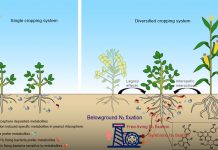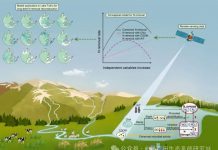Jian-Gang Li Gai-Di Ren Zhong-Jun Jia Yuan-Hua Dong. Composition and activity of rhizosphere microbial communities associated with healthy and diseased greenhouse tomatoes. Plant and Soil 2014 DOI:10.1007-s11104-014-2097-6(原文链接)
Abstract
Aims
The goal of this study was to investigate the structure and functional potential of microbial communities associated with healthy and diseased tomato rhizospheres.
Methods
Composition changes in the bacterial communities inhabiting the rhizospheric soil and roots of tomato plants were detected using 454 pyrosequencing. Microbial functional diversity was investigated with BIOLOG technology.
Results
There were significant shifts in the microbial composition of diseased samples compared with healthy samples which had the highest bacterial diversity. The predominant phylum in both diseased and healthy samples was Proteobacteria which accounted for 35.7–97.4 % of species. The class Gammaproteobacteria was more abundant in healthy than in diseased samples while the Alphaproteobacteria and Betaproteobacteria were more abundant in diseased samples. The proportions of pathogenic Ralstonia solanacearum and Actinobacteria species were also elevated in diseased samples. The proportions of the various bacterial populations showed a similar trend both in rhizosphere soil and plant roots in diseased versus disease-free samples indicating that pathogen infection altered the composition of bacterial communities in both plant and soil samples. In terms of microbial activity functional diversity was suppressed in diseased soil samples. Soil enzyme activity including urease alkaline phosphatase and catalase activity also declined.
Conclusions
This is the first report that provides evidence that R. solanacearum infection elicits shifts in the composition and functional potential of microbial communities in a continuous-cropping tomato operation.







